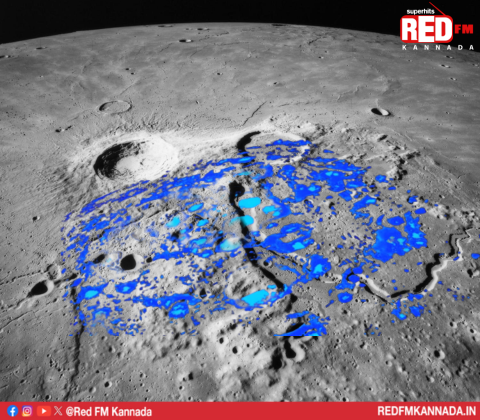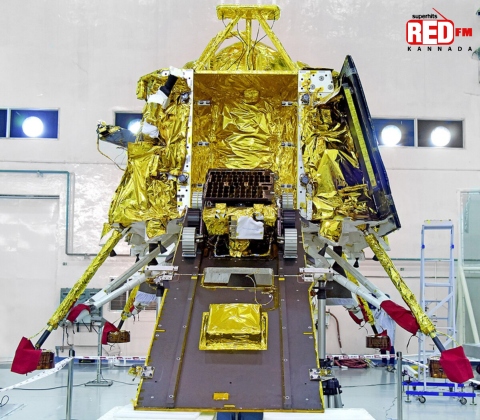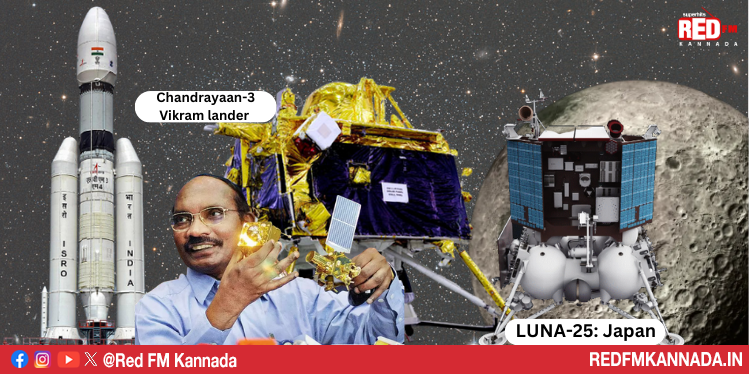In the vast expanse of space, where Earth’s nearest neighbour, the Moon, orbits in silence, lies a gateway to a future beyond our planet. This gateway, the Moon’s South Pole, holds the promise of a new era in space exploration and colonization. Space agencies from around the world are pushing the boundaries of human achievement amid daunting challenges.
Decades of Discovery:
The journey to the Moon’s South Pole began with dreams and speculation. Even before the first human set foot on the lunar surface during the Apollo missions of the 1960s, scientists pondered a tantalizing possibility – the existence of water. Early lunar samples seemed dry, but hope endured.
In 2008, Brown University researchers revisited these lunar samples with cutting-edge technology and discovered hints of hydrogen inside tiny volcanic glass beads. Then, in 2009, NASA’s Chandrayaan-1 probe, launched by the Indian Space Research Organisation (ISRO), made a historic revelation. It detected water on the Moon’s surface, raising hopes for future exploration.
The Quest for Water:
The pivotal moment came when another NASA probe struck the Moon’s South Pole in 2009. It confirmed the presence of water ice hidden below the lunar surface, particularly in the shadowed craters of the South Pole. This discovery set the stage for a new era of lunar exploration focused on this enigmatic region.


India’s Bold Move:
Fast forward to today, and India’s ISRO is poised for a ground-breaking mission called Chandrayaan-3. While it directly land at the South Pole, its proximity promises vital insights into lunar water exploration. This mission represents a significant step in India’s space ambitions and the global quest to unlock the Moon’s potential.
Japan Joins the Race:
Not far behind, the Japanese Aerospace Exploration Agency (JAXA) is launching the Smart Lander (SLIM) mission, aiming for a lunar touchdown just three days after Chandrayaan-3. SLIM’s goal is to demonstrate precise lunar landing techniques, making challenging areas more accessible. It’s equipped with advanced navigation and obstacle detection systems, targeting a landing within Shioli Crater, an impact feature rich in scientific potential.
Global Lunar Exploration Surge:
NASA, too, is gearing up for a flurry of lunar missions. Projects like Peregrine Mission 1, IM-1, Lunar Trailblazer, and Griffin Mission 1 are set to explore the Moon’s mysteries, further cementing humanity’s presence in the cosmos.
The Promise of Moon Colonization:
The Moon isn’t just a scientific curiosity; it’s a treasure trove of resources. Helium-3, rare earth elements, and water ice lie waiting to fuel future space missions and boost our economy. Establishing a sustainable human presence on the Moon isn’t just about resources; it’s about expanding our reach into deep space, fostering international collaboration, and even strategic military interests.


A Historic Achievement:
Colonizing the Moon would be a milestone in human history, inspiring generations to come. It would showcase our ingenuity and determination while uniting people worldwide under a shared purpose.
The Challenges We Face:
But the road to lunar colonization is fraught with challenges. We must develop safe and reliable transportation systems, create lunar habitats that withstand harsh conditions, and establish sustainable sources of energy and resources. These technical hurdles are formidable but not insurmountable.
As humanity turns its gaze toward the Moon’s South Pole, we embark on a journey of exploration, discovery, and potential colonization. Space agencies and nations, old and new, join hands in a shared quest to unlock the Moon’s secrets and pave the way for a future where the Moon is not just a celestial neighbor but a stepping stone to the stars. The challenges are immense, but the rewards are equally boundless, and together, we are pushing the boundaries of what’s possible in the cosmos.



















































